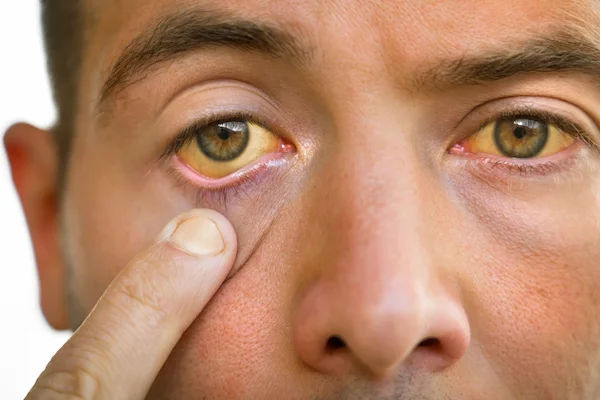Multiple Organ Dysfunction Syndrome (MODS): A Guide to the Domino Effect
Know about the MODS, what it is, and domino effect, causes, signs, symptoms, and who is at risk. Learn about the diagnosis, treatment options, and prevention of MODS.

Written by Dr. Siri Nallapu
Reviewed by Dr. Dhankecha Mayank Dineshbhai MBBS
Last updated on 13th Oct, 2025

Introduction
Imagine a line of dominoes standing upright. You tap the first one, and it falls into the next, triggering a chain reaction that quickly topples the entire row. This simple analogy helps explain one of the most critical conditions in modern medicine: Multiple Organ Dysfunction Syndrome, or MODS. It's not a disease itself, but a devastating syndrome—a collection of symptoms—where the failure of one organ system triggers the failure of another, setting off a life-threatening chain reaction within the body. This article will demystify this complex syndrome, explaining what it is, why it happens, how it's treated, and what the journey ahead might look like for patients and their loved ones.
What is Multiple Organ Dysfunction Syndrome? The Body's Chain Reaction
Multiple Organ Dysfunction Syndrome (MODS) is a severe, life-threatening condition characterised by the progressive dysfunction of two or more organ systems in an acutely ill patient. The keyword here is progressive. It’s not that several organs fail independently at the same time; rather, the failure of one (like the lungs) places immense strain on others (like the heart and kidneys), causing them to falter in sequence. This is the core of the "domino effect."
The primary driver of this cascade is a runaway inflammatory response. When the body faces a massive threat, its immune system launches a counterattack. However, in MODS, this response becomes exaggerated and destructive, damaging the body's own tissues and organs instead of just the initial threat.
Consult a Top General Practitioner for Personalised Advice
MODS vs. MOF: Understanding the Spectrum of Failure
You might also hear the term Multiple Organ Failure (MOF). While often used interchangeably, there's a subtle distinction. MODS describes a spectrum of dysfunction, from mild abnormality to complete failure. MOF typically refers to the end-stage of this spectrum, where organs have completely shut down and can no longer maintain life without intense artificial support. Think of MODS as the pathway and MOF as the final, most critical destination on that path.
The Domino Effect: How MODS Start and Spread
Understanding the "how" is crucial to grasping the seriousness of MODS. It’s a complex process, but it can be broken down into key stages.
The Initial Insult: The Push That Starts the Dominoes Falling
Every chain reaction needs a starting point. In MODS, this is called the "initial insult." Common triggers include:
Severe Infection (Sepsis): This is the most common cause. A widespread infection, such as pneumonia, an abdominal infection, or COVID-19, can overwhelm the body.
Major Trauma: Car accidents, severe burns, or multiple fractures can cause massive tissue damage.
Lack of Oxygen (Hypoperfusion): A heart attack, severe blood loss, or shock can deprive organs of oxygen-rich blood.
Pancreatitis: Severe inflammation of the pancreas can trigger a systemic response.
The Inflammatory Avalanche: SIRS and the Loss of Control
The body's response to the initial insult is where things go awry. It releases a flood of inflammatory chemicals (cytokines) into the bloodstream to fight the problem. This is known as Systemic Inflammatory Response Syndrome (SIRS). In a controlled situation, this is beneficial. But in MODS, the release is so massive that it becomes a destructive "cytokine storm."
This storm damages the lining of blood vessels, making them leaky. Fluid seeps into tissues, causing swelling and making it harder for blood to reach organs. Blood clots may form in small vessels, further blocking blood flow. This combination of inflammation, leaky vessels, and microclots is what begins to starve and poison the organs, one after another. This explains how sepsis leads to MODS—it is the classic catalyst for this uncontrolled inflammatory cascade.
Recognising the Signs: Symptoms of MODS by Organ System
The symptoms of MODS are as varied as the organs affected. They often develop sequentially, and medical teams in the ICU monitor for them closely. It's important to note that these are severe symptoms in someone who is already critically ill.
Lung Failure (ARDS) and Cardiovascular Symptoms
Often the first to be affected, lung failure is called Acute Respiratory Distress Syndrome (ARDS). The patient experiences extreme shortness of breath and dangerously low oxygen levels, requiring a ventilator (breathing machine). The heart also struggles, often beating very fast (tachycardia) to compensate, but blood pressure can drop precipitously, requiring powerful medications to support it.
Kidney and Liver Dysfunction
As blood pressure falls, the kidneys are deprived of blood flow and begin to fail. Urine output drops dramatically, and waste products like creatinine build up in the blood. The liver, a detoxification centre, also malfunctions, leading to jaundice (yellowing skin/eyes) and a rise in liver enzymes. This combined kidney and liver dysfunction is a common and serious development.
Neurological and Haematological Changes
The brain is sensitive to these systemic changes. Patients may become confused, disoriented, lethargic, or even comatose. The blood's ability to clot is also disrupted, leading to a high risk of both uncontrolled bleeding and dangerous clotting simultaneously.
Who is Most at Risk? Identifying Vulnerable Patients
While MODS can happen to anyone facing a severe illness, some individuals are more vulnerable. This includes the elderly, those with chronic illnesses (like diabetes, heart disease, or kidney disease), and people with weakened immune systems (e.g., from chemotherapy or HIV). Recognising these risk factors helps medical teams be extra vigilant.
How is MODS Diagnosed? The Tools Doctors Use
There is no single test for MODS. Diagnosis is clinical, based on a combination of factors. Doctors use:
Physical Exam: Assessing the patient's overall state.
Laboratory Tests: Checking blood counts, kidney and liver function, clotting factors, and markers of inflammation like lactate.
Imaging: X-rays or CT scans to look for infection or organ damage.
Scoring Systems: Tools like the Sequential Organ Failure Assessment (SOFA) score are used to objectively quantify the degree of dysfunction in each organ system over time, helping to track progression and predict MODS prognosis.
If you are concerned about a loved one's symptoms following a serious health event, consulting a specialist for an evaluation is critical. Platforms like Apollo 24|7 can connect you with experts for a preliminary consultation to discuss your concerns.
Treating MODS: A Race Against Time in the ICU
Treatment for MODS is aggressive and takes place in the ICU. The goals are twofold: support the failing organs to keep the patient alive, and treat the underlying cause to stop the inflammatory cascade.
Supporting Failing Organs: Life-Sustaining Measures
This is the cornerstone of MODS treatment in the ICU.
Lungs: Mechanical ventilators breathe for the patient.
Heart and Blood Pressure: IV fluids and vasopressor drugs maintain circulation.
Kidneys: Dialysis machines filter the blood if the kidneys have failed.
Nutrition: IV nutrition or feeding tubes provide essential energy.
Targeting the Root Cause: Fighting Infection and Inflammation
Antibiotics/Antifungals: Given broad-spectrum if an infection is suspected.
Source Control: This is vital. It may involve surgery to drain an abscess or remove dead tissue.
Supportive Care: Managing blood sugar, preventing bedsores, and preventing new infections are all crucial.
What is the Prognosis? Understanding the Chances of Recovery
The MODS survival rate is sobering. Mortality increases with the number of organs that fail and the duration of failure. For example, failure of two organs may carry a mortality rate of 30-40%, while failure of three or more systems for more than three days can have a mortality rate exceeding 70%. However, survival is possible, especially for younger, otherwise healthy patients. Recovery is often a long and difficult process, involving prolonged hospitalisation and rehabilitation to regain strength and organ function.
Can MODS Be Prevented? The Importance of Early Action
Prevention is the best strategy. This hinges on the rapid and effective treatment of the conditions that lead to MODS. If you or a loved one shows signs of a severe infection (e.g., high fever, confusion, extreme weakness, rapid breathing), seeking immediate medical attention is paramount. Early antibiotics for sepsis, prompt surgery for trauma, and optimal management of chronic diseases can prevent the initial domino from being pushed. If symptoms of a serious infection persist beyond a few hours, do not wait; consult a doctor online with Apollo 24|7 for immediate guidance or visit an emergency room.
Conclusion
Multiple Organ Dysfunction Syndrome represents one of the ultimate challenges in critical care medicine. It is a stark reminder of how interconnected our bodily systems are and how a localised problem can spiral into a total body crisis. While the statistics can be frightening, understanding MODS empowers patients and families to recognise the severity of critical illness and the importance of swift medical intervention. The dedicated work of ICU teams focuses on breaking the chain reaction, providing organs with the support they need to heal. For survivors, the road to recovery requires immense resilience and support. The most powerful tool we have against MODS remains awareness and prevention. If your condition does not improve after trying basic care for a severe illness, book a physical visit to a doctor with Apollo 24|7 to get a proper diagnosis and prevent complications.
Consult a Top General Practitioner for Personalised Advice
Consult a Top General Practitioner for Personalised Advice

Dr. Anand Ravi
General Physician
2 Years • MBBS
Bengaluru
PRESTIGE SHANTHINIKETAN - SOCIETY CLINIC, Bengaluru

Dr Syed Mateen Pasha
General Physician
2 Years • MBBS
Bengaluru
PRESTIGE SHANTHINIKETAN - SOCIETY CLINIC, Bengaluru

Dr. Syed Ismail Ali
General Practitioner
7 Years • MBBS
Hyderabad
Apollo 24|7 Clinic, Hyderabad

Dr. Avinash Pasuparthy
General Practitioner
5 Years • MBBS
Visakhapatnam
Apollo Clinic Vizag, Visakhapatnam

Dr. Pankaj Tripathi
General Practitioner
20 Years • MBBS, MD Pathology
Lucknow
Best Diabetologist Clinic, Lucknow




